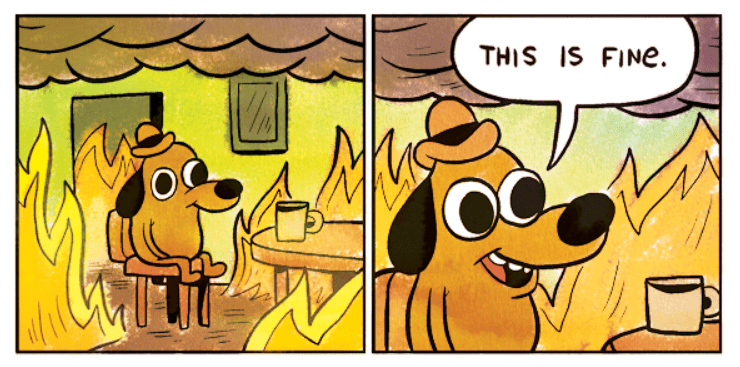
Struggling with keeping your project on track? Are deadlines constantly being pushed back? Are your project profits slowly evaporating?
We often plan a project with this overly optimistic mindset — never considering the myriad of project risks out there.
Before you know it, you’re mid-project and starting to feel the heat.

Most projects “fail” for similar reasons. So we’ll explore the most common project risks (and how to prevent them) in this guide.
It’s important to remember that risks don’t always appear as a dark, foreboding catastrophes.
The most common types of risks can be filed under the label:
(particularly if you don’t pay attention).
Here’s a quick summary of project risk examples for you skimmers out there:
| Project risk | Description |
|---|---|
| 1. Scope creep | Changes to a project’s scope after starting |
| 2. Blowing your budget | Spilling over your estimated budget |
| 3. Project delays | Tasks take longer than estimated |
| 4. Not enough resources | Not having the necessary resources to complete a project |
| 5. Lack of clarity | Unclear requirements, scope, or communication |
| 6. Client issues | Inaccurate expectations and miscommunication from stakeholders |
| 7. Contractor delays | Contractors not being accountable |
| 8. Unrealistic deadlines | Unrealistic deadlines your team can’t meet |
| 9. Low performance | Burnout and poor project goals lead to work just not being done |
| 10. Inexperienced workers | Inexperienced team members are assigned to projects that carry a lot of weight |
| 11. Poor risk management | Identifying and preparing for all of these risks 😉 |
And here they are in full…
68%of poorly managed projects experience scope creep — so there’s a good chance you’ve felt it, too.
Scope creep refers to the tendency for the scope of a project to expand beyond its original objectives and requirements.
It tends to happen when you agree to sign off on additional client requests outside the project’s scope — without adjusting the timeline or budget.
But this often leads to late projects, a stressed team, and project profit margins sailing off into the sunset.
How can you avoid it?
Here are a few steps you can take to banish scope creep for good:
Check out the guides linked above to learn more about each tip.
The cost risk of blowing the project budget is all too common when it comes to client work.
But it’s usually down to poor project cost estimating and scoping.
Many service providers get into the habit of skimming over this step to get the client (money) onto the books.
Which tends to lead to scenarios like the one below. 😢

How can you avoid this?
Create a detailed list of every project task (and what they cost) using a Work Breakdown Structure. It will help you create a far more accurate project budget.
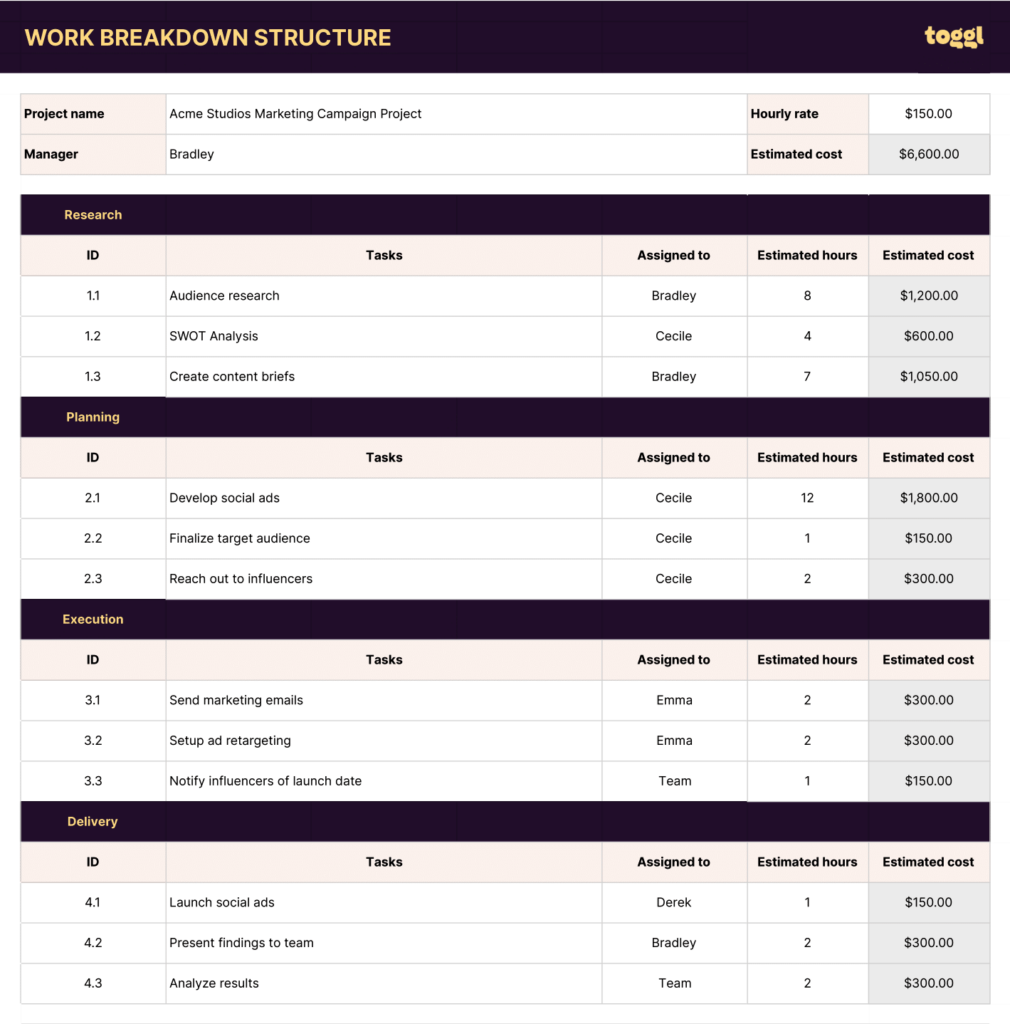
The risk of a project being delayed is hard (impossible) to avoid. You’re not alone here, by the way. A lot of people share your pain…
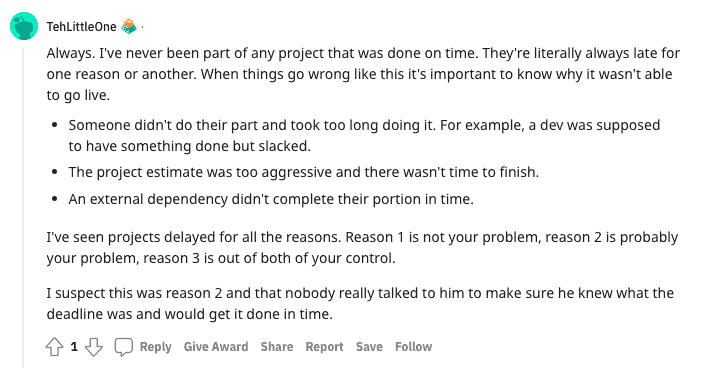
Why do they happen? Hard to pinpoint, to be honest.
But I 100% agree with some of the reasons the Reddit user listed above.
How can you avoid it?
With a high-level view of all timelines and how they impact each other, you can anticipate delays and move affected timelines so your project can continue.
Here’s what a free online Gantt chart looks like from Toggl Plan:
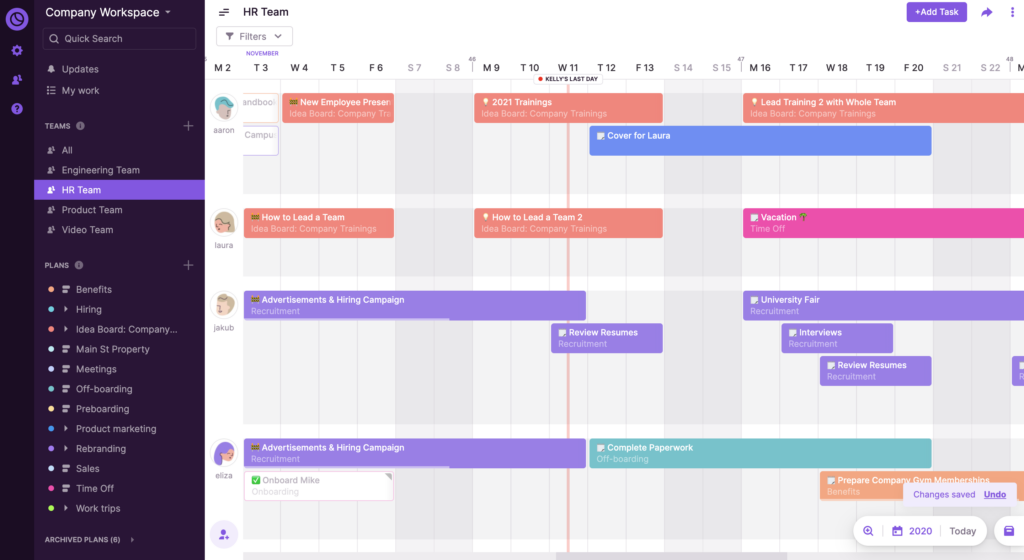
A Gantt chart helps to prevent project delays by visually representing the planned schedule of tasks and the dependencies between them.
Perfect for project managers who need to identify potential bottlenecks or scheduling conflicts and make necessary adjustments to keep the project on track.
Further Reading:Resource risk happens when you’ve underestimated how many resources you’ll need to get a project over the line. It can include people, materials, or budget.
A lack of resources can result in delays, cost overruns, and a drop in overall project quality. It can also cause you to make difficult decisions about what to prioritize and what to cut to stay on track.
You can evaluate this as poor resource planning and management — i.e. when a project’s resources aren’t properly handled or anticipated.
How can you avoid it?
Create a resource allocation plan which makes the best use of team resources while supporting overall goals.
You may want to consider a project resource planning template.
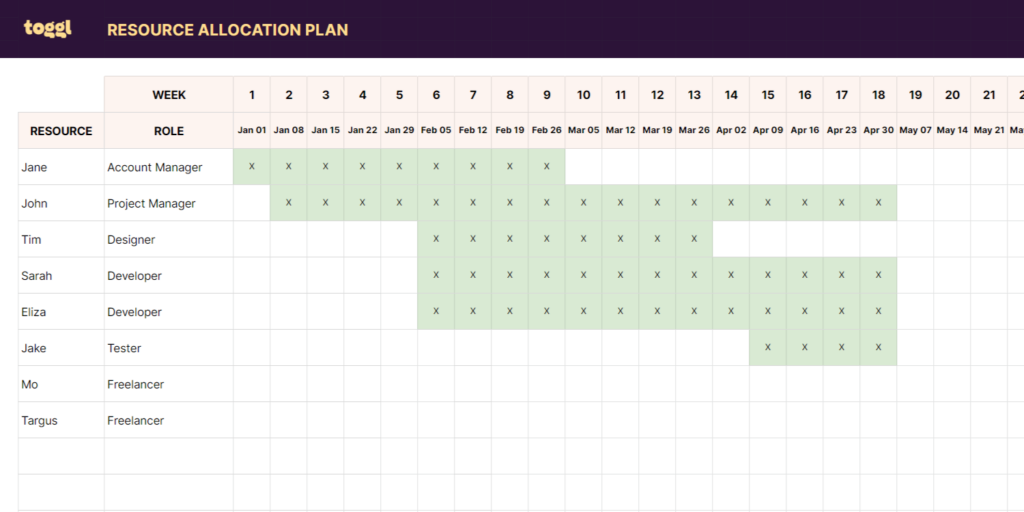
But templates are typically designed for specific tasks and may have a different level of functionality than dedicated resource management tools.
Instead, you can use resource management tools alongside your task, project, or portfolio management software.
Consider using a visual resource planning tool such as Toggl Plan.
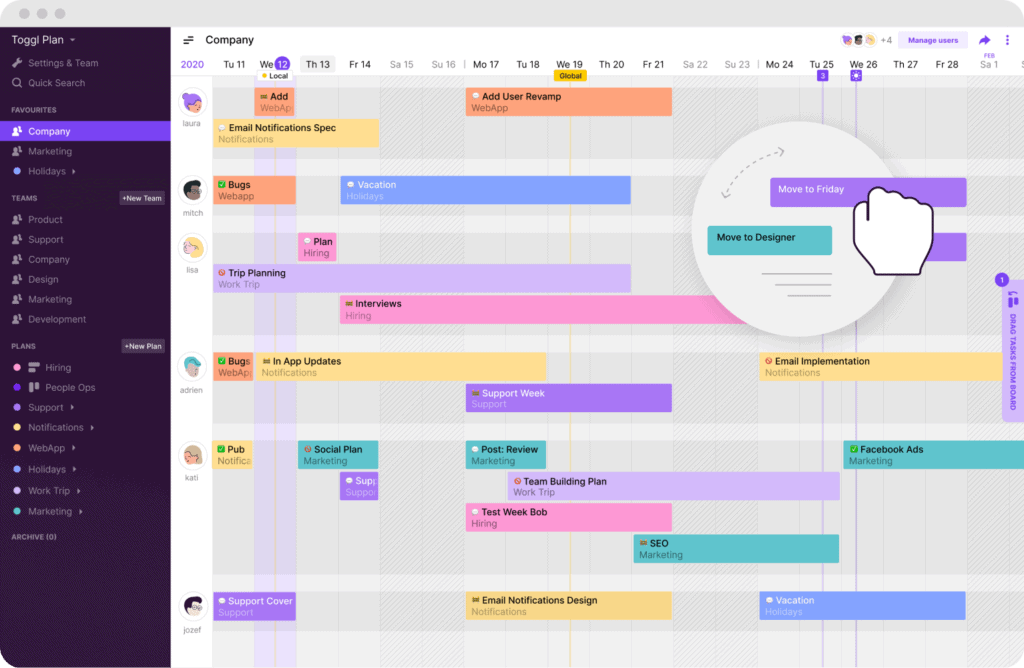
Generally, resource planning should be done in the project planning phase.
And if you need more resources to deliver by the deadline?
Ask your client for an extension. They’ll appreciate the transparency and extend your deadline.
Further Reading:A lack of clarity can happen in many ways:
The worst part is that lack of clarity is usually based on assumptions, so nobody knows it’s happened until it’s too late.
For example, the client assumes you’re hard at work on that custom animation they wanted on their landing page because you never clearly said “no.”
And the statement of work says nothing but “build landing page.”
The meeting where that gets brought up won’t be comfortable. 😬
How can you avoid it?
Double-check all project requirements during the planning stage and create a statement of work that your client is happy with.
This centralized information will keep everyone in the loop. Even if misunderstandings happen, you have a clearly defined document to refer to if anyone needs clarification.
Further Reading:Can’t live with ‘em, can’t live without ‘em.
Project clients can contribute their share of project risks, like miscommunication and false expectations.
There’s also the dreaded “helicopter client.”
They tend to hover over you and the project — constantly questioning your every move.
This isn’t all their fault. The leading cause of a “helicopter client” usually is down to the following:
How can you avoid it?
Most client issues can be avoided by:
Your best bet to satisfy clients (which translates to project success!) is clarity, transparency, and communication.
Top tip:
As a project manager, you must manage client expectations from the start. A project communication plan helps you with better client management and smoother project management.
Many service providers work with freelancers and contractors (you might even be one).
But that also means we deal with the delays and challenges of having contractors on our teams.
Freelancers typically lead themselves, so you won’t directly be in charge of when/how they accomplish their tasks.
Freelancers can drop off for several reasons, but common reasons include:
Plus, some contractors leave mid-project — or drop off the face of the planet.
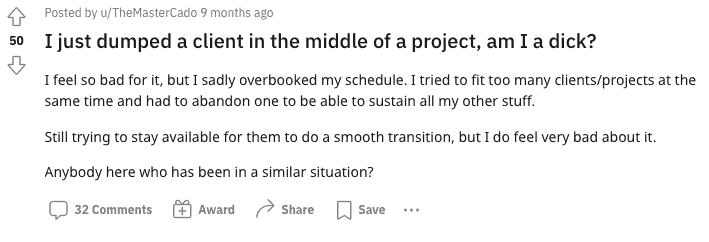
How can you avoid it?
Freelancers will drop off projects. You can’t control that. But you can control how you operate internally.
Ask yourself the following questions:
Once you have your internal processes nailed down, then you should work on how you communicate with freelancers.
Deadlines, deadlines, what a joke…
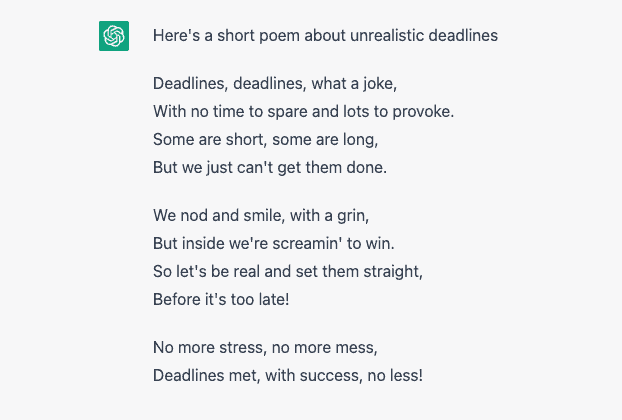
Unrealistic deadlines are set for many reasons. But one of my favorites?
We get too optimistic and think work can be done in a flash. It’s called the human planning fallacy, which happens to all of us.
For example, you might tell yourself that a blog post can be completed in three days: one day for drafting, one for editing, and one for shipping.
But you forget that your writer, editor, account manager, and PM are all in four different countries…
How can you avoid it?
Make project time estimation a part of your process. Use your historical data from past projects to the fullest, then sprinkle some contingency time on top.
Lay this time estimate in a project management software to visualize the work ahead. Here’s a schedule laid out in Toggl Plan.
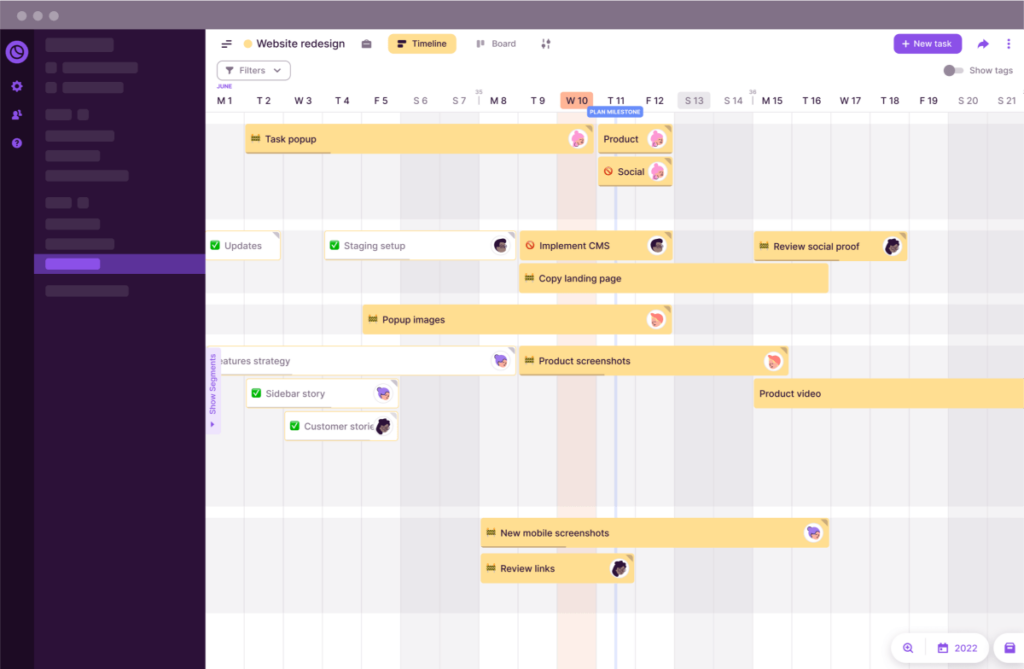
Planning tools help you to visualize the impact of your estimated deadlines better. Allowing you to re-adjust and push back work where necessary.
Top tip:

Need help with estimating how long a project will take? Use past historical data to grab a quick time estimate . The Project Dashboard in Toggl Track will give you instant access to several metrics, including total hours spent on each project!
It doesn’t matter how well you plan a project. The project will likely be de-railed if your project team isn’t at its best.
It’s not always easy to identify the why here. But, in my experience, it typically results from poorly planned projects and a lack of consideration regarding resource planning.
How can you avoid it?
Correctly set deliverables and communicate goals. This comes down to good workload management and a clear work schedule.
After the project starts, keep in contact with your team. If someone says they’re struggling with motivation, be intuitive with their workload and lower their capacity in the future.
Putting new or inexperienced team members on high-stakes projects can be tempting. Perhaps you’re short on resources, or maybe you’re eager to give them a chance.
But projects that carry a lot of weight require an experienced touch.
New team members lack context — maybe this client has a particular way, or your team member just isn’t ready for this huge responsibility.
How can we avoid it?
Thoughtful resource management will mitigate this risk. Make sure you put experienced team members on your highest-priority tasks.
This sort of risk also applies to projects already underway. If team member A has spent a lot of time working on client B’s project, don’t switch them out unless necessary.
They have the context and experience that new team members don’t.
Further Reading:Poor risk management.
The reason many of the above project risks are happening in the first place!
27% of failed projects cited undefined risks as their primary cause of failure — and that’s just counting the projects surveyed.
Project risk management is identifying, assessing, and controlling risks that may impact the success of a project.
What does poor risk management mean for project managers?
How can you avoid it?
Do a thorough risk assessment and establish a solid risk management process.
Risk mitigation involves brainstorming possible situations with your team and asking experts what risks to expect — including assessing their effects and damage.
Once you have identified risks, you have to ask yourself: “What’s our risk appetite? Should we carry on, or should we play it safe?”
You’ll be glad you were a little pessimistic initially if you have a healthy, pre-prepared backup plan to refer to when encountering a problem that could lead to project failure.
Learn how to assess and analyze project risks in our complete project risk assessment and management guide.
Considering the most common types of project risks and creating mitigation strategies will help guard your next project against the worst — or at least soften the blow if your budget trickles over or you miss a deadline.
Mistakes happen, but there’s nothing wrong with that as long as you let them fuel your expertise and improve your processes.
It’s all about risk identification and continuous improvement. You’ve got this. 🙂
Sean is a Content Marketer at Toggl. He's been involved in SEO and Content Marketing since 2017. Before working for Toggl, Sean ran SEO at a digital marketing agency—so he's all too familiar with time tracking and project management.